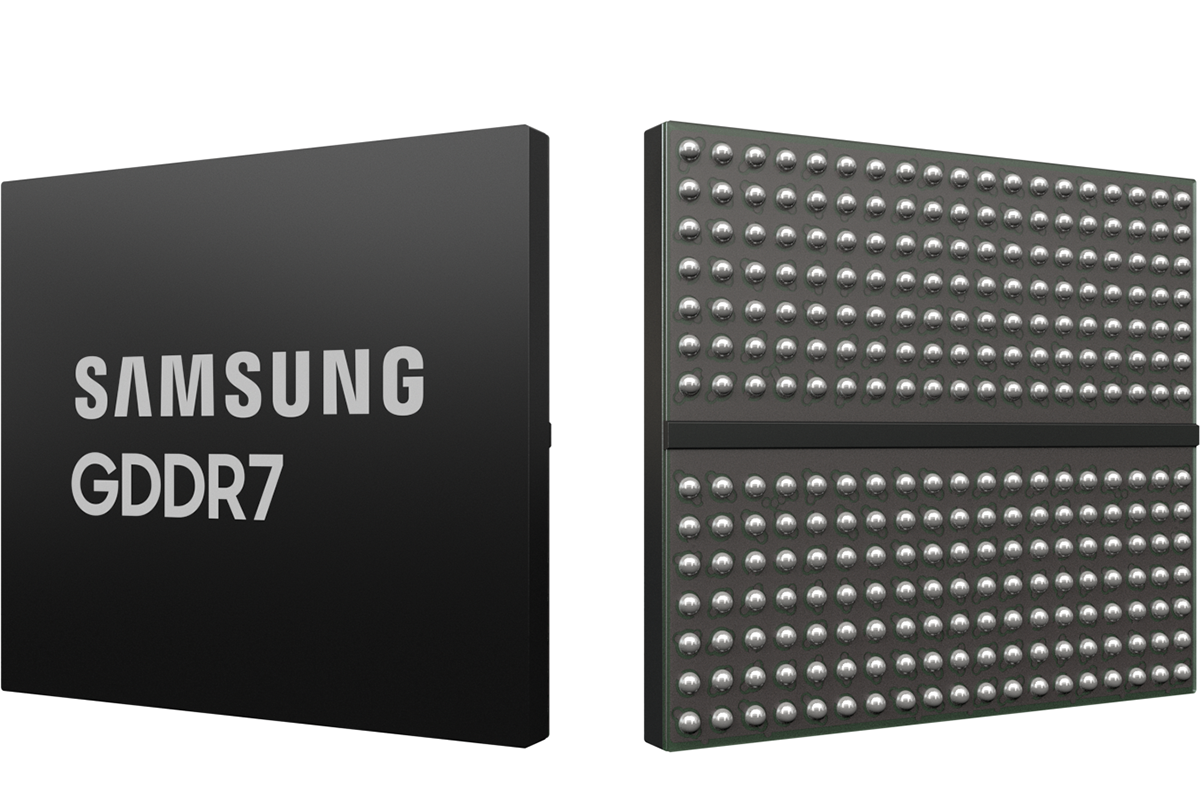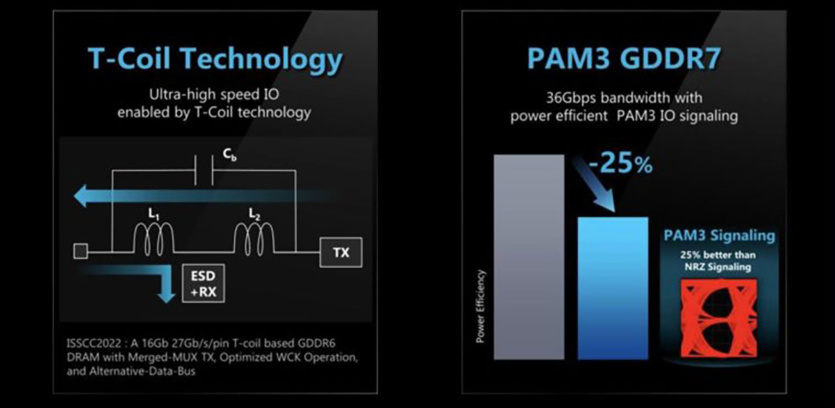
Samsung to release world’s first GDDR7 chip – 40% faster than GDDR6 and 20% more energy efficient
Samsung has announced that it has completed the development of the world’s first GDDR7 chip. The memory has a data transfer rate of 32 GT/s, uses pulse-amplitude modulation (PAM3), and promises a 20% increase in energy efficiency compared to GDDR6.
At 32 GT/s, GDDR7 has a bandwidth of 128 GB/s, which is significantly more than the 89.6 GB/s per chip provided by GDDR6X with 22.4 GT/s. The 384-bit GDDR7 memory subsystem with 32 GT/s performance will provide a whopping 1,536 TB/s of bandwidth, which is more than the 1,008 TB/s of the GeForce RTX 4090.
To achieve unprecedented speeds, the GDDR7 uses PAM3 pulse-amplitude modulation with three different signal levels (-1, 0, and +1). This mechanism allows three bits of data to be transmitted in two cycles, which is more efficient than the two-level NRZ used in GDDR6. However, it is important to note that PAM3 signals are more difficult to generate and decode than NRZ (which means additional power consumption), and they can be more susceptible to noise and interference. But it seems that the advantages of PAM3 outweigh its problems, so modulation will be used in GDDR7 and USB4 v2.

GDDR7 memory consumes 20% more energy efficiently than GDDR6, although Samsung does not specify the method of measuring this indicator. Typically, memory manufacturers measure the power transferred per bit.
However, this does not mean that GDDR7 chips and controllers will consume less than GDDR6. PAM3 encoding is more complex and requires more power. Samsung says it uses an epoxy molding compound (EMC) with high thermal conductivity and 70% lower thermal resistance for GDDR7 packaging to ensure that active components do not overheat. This indicates that GDDR7 memory heats up more, especially when operating at high clock speeds.
Samsung does not disclose when it plans to start mass production of GDDR7 and what process it will use. Given the announcement of new graphics architectures by AMD and NVIDIA every two years, it is logical to expect GDDR7 graphics cards to hit the market in 2024.

